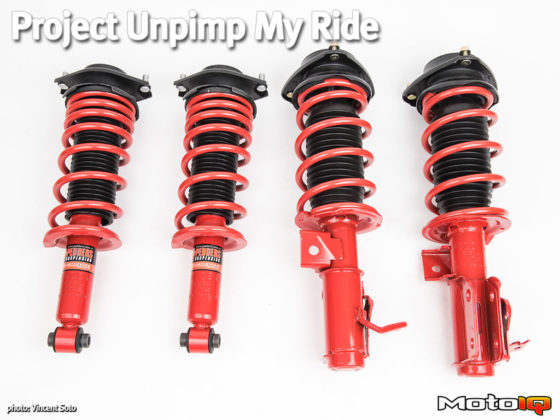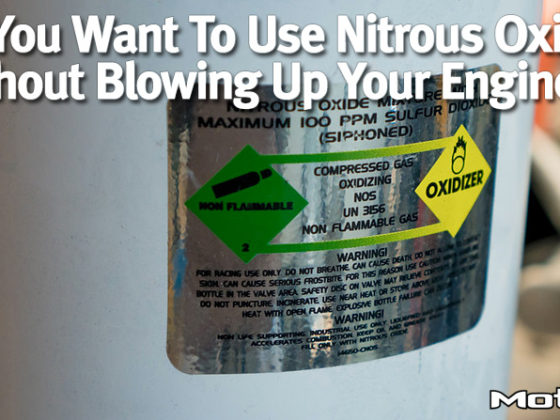,
 So, Porsche uses a pair of NACA ducts in the hood to feed cooling air to the brakes. I wish I could take credit for giving the guys at Porsche the idea with my NACA duct on Project S2000, but I got that idea from the NACA ducts used on the Evo X and Nissan GTR hoods. Did I mention I was in a hurry to get through the show? I’m sorry, I didn’t pop the hood to check out the air routing; fail. I suck.
So, Porsche uses a pair of NACA ducts in the hood to feed cooling air to the brakes. I wish I could take credit for giving the guys at Porsche the idea with my NACA duct on Project S2000, but I got that idea from the NACA ducts used on the Evo X and Nissan GTR hoods. Did I mention I was in a hurry to get through the show? I’m sorry, I didn’t pop the hood to check out the air routing; fail. I suck.
 Yes, massive brakes. Yes, center locking wheels. Yes, wide and sticky rubber. And, the wheel well opening follows the wheel closely by street car standards. I’m guessing the suspension is pretty stiff and there’s not a ton of travel.
Yes, massive brakes. Yes, center locking wheels. Yes, wide and sticky rubber. And, the wheel well opening follows the wheel closely by street car standards. I’m guessing the suspension is pretty stiff and there’s not a ton of travel.
 The front fenders have massive venting. My guess is this is required to do the relative lack of downforce from the front splitter due to the massive front cooling openings in the front bumper.
The front fenders have massive venting. My guess is this is required to do the relative lack of downforce from the front splitter due to the massive front cooling openings in the front bumper.
 So, onto the power making stuff at the rear. With the 911 being rear-engine, there’s not much room to work with in placing a diffuser, so check out the little cutouts in the upper edge of the diffuser for the exhaust manifold and turbo oil drain line. 700hp generates a lot of heat, so the exhaust outlet of the cat has the foil heat shielding stuff to prevent from melting the rear bumper. You’ll see that heat shielding used on turbo turbine housings once in a while too and I’m a little surprised Porsche didn’t use it here, but maybe they were looking to save a little cost. Or it could also keep in too much heat causing a reliability issue with the VGT mechanism. That aluminum wedge attached to the bottom of the turbo is the sump for the turbo oil drain which is required due to the low placement of the turbo. No gravity drain of the oil to the oil pain here; a scavenge pump sucks the oil out of the sump and puts it in the pan.
So, onto the power making stuff at the rear. With the 911 being rear-engine, there’s not much room to work with in placing a diffuser, so check out the little cutouts in the upper edge of the diffuser for the exhaust manifold and turbo oil drain line. 700hp generates a lot of heat, so the exhaust outlet of the cat has the foil heat shielding stuff to prevent from melting the rear bumper. You’ll see that heat shielding used on turbo turbine housings once in a while too and I’m a little surprised Porsche didn’t use it here, but maybe they were looking to save a little cost. Or it could also keep in too much heat causing a reliability issue with the VGT mechanism. That aluminum wedge attached to the bottom of the turbo is the sump for the turbo oil drain which is required due to the low placement of the turbo. No gravity drain of the oil to the oil pain here; a scavenge pump sucks the oil out of the sump and puts it in the pan.
 The compressor outlet tube is some kind of high-temp capable rubber or silicone or something. It has an abrasion resistant sleeve on the lower portion to avoid getting holes poked into it from all the sharp pebbles coming off the sticky rubber. If you look between the compressor outlet and oil sump of the turbo, you can see the electric rotary actuator which controls the variable geometry vanes in the turbine housing.
The compressor outlet tube is some kind of high-temp capable rubber or silicone or something. It has an abrasion resistant sleeve on the lower portion to avoid getting holes poked into it from all the sharp pebbles coming off the sticky rubber. If you look between the compressor outlet and oil sump of the turbo, you can see the electric rotary actuator which controls the variable geometry vanes in the turbine housing.



